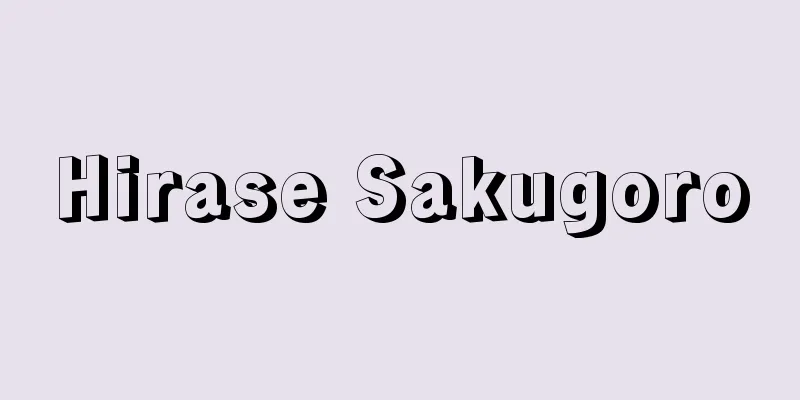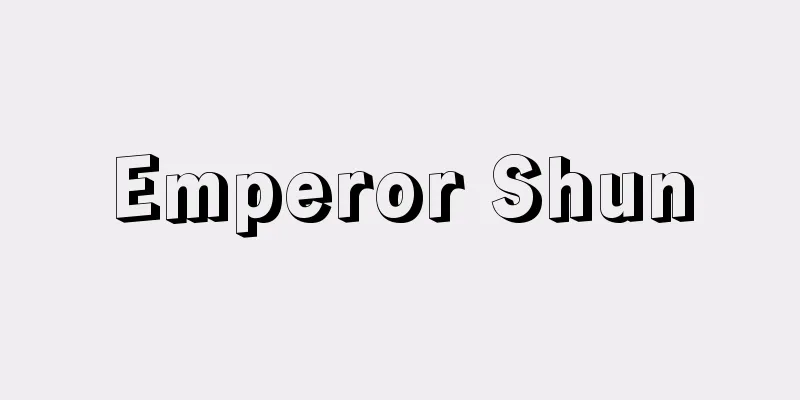Hirase Sakugoro

|
Year of death: January 4, 1925 Year of birth: 7th January 1856 (12th February 1856) A botanist from the Meiji and Taisho periods. Born in Asuwa County, Echizen Province (Fukui Prefecture). After graduating from Fukui Domain Middle School, he became an art teacher at Gifu Middle School in 1875. He began working at the Botany Department of the Tokyo Imperial University Faculty of Science (within Koishikawa Botanical Garden) from 1898, becoming an assistant in 1901. There, he made drawings for teaching and research, and slides for microscopes, but following a suggestion from Associate Professor (later Professor) Ikeno Seiichiro of the Faculty of Agriculture, he discovered sperm in gymnosperms for the first time using the fruit of female ginkgo trees (ginkgo nuts) in the botanical gardens, traced the fertilization process, and published his work in 1904 as "On the spermatozoa of gymnosperms." Around the same time, Ikeno also discovered sperm in cycads. These discoveries were major events in plant taxonomy, cytology, and evolution, and were praised by scholars overseas (he and Ikeno received the Imperial Academy Prize in 1912). He retired from the university in 1955, and later served as a teacher at Hikone Middle School (Shiga Prefecture) and Hanazono Middle School (Kyoto Prefecture). In 1918, he reported on the fertilization of black pine trees. <References> Akira Yuasa, "The Life of the Ginkgo Tree" (Genetics, Vol. 22, No. 9), and "The Intersection and Development of Old and New Cytology" (Genetics, Vol. 22, No. 9). (Akira Yuasa) Source: Asahi Japanese Historical Biography: Asahi Shimbun Publications Inc. About Asahi Japanese Historical Biography |
|
没年:大正14.1.4(1925) 生年:安政3.1.7(1856.2.12) 明治大正時代の植物学者。越前国(福井県)足羽郡生まれ。福井藩中学を卒業し,明治8(1875)年岐阜中学の図画教師。21年から東京帝大理科大の植物学教室(小石川植物園内)に勤め,26年助手となる。ここで教授用,研究用の画や顕微鏡用のプレパラートを作ったりしていたが,農学部の池野成一郎助教授(のち教授)の示唆を受け,植物園内のイチョウの雌の木になる果実(銀杏の実)を材料にして裸子植物に初めて精子を発見,受精の過程を追跡し,29年「いてふノ精虫ニ就テ」として発表した。同じころ,池野はソテツの精子を発見した。これらの発見は植物分類学・細胞学・進化学上の一大事件であり,海外の学者にも称賛された(明治45年池野と共に帝国学士院恩賜賞受賞)。30年に大学を退職,その後は彦根中学(滋賀県),花園中学(京都府)の教員を勤めた。大正7(1918)年にはクロマツの受精に関する報告をしている。<参考文献>湯浅明「イチョウの一生」(『遺伝』22巻9号),同『新旧細胞学の接点と展開』 (湯浅明) 出典 朝日日本歴史人物事典:(株)朝日新聞出版朝日日本歴史人物事典について 情報 |
>>: Pilaster (English spelling)
Recommend
Primitive kidney duct
It is the most primitive excretory organ, found i...
Time series analysis - jikeiretsubunseki (English spelling) time series analysis
A series of statistical figures obtained by conti...
Hacılar (English spelling)
…Kaki [Masashi Hamashima] [Western] People have l...
Treponema (English spelling)
A genus of small spirochetes belonging to the orde...
《Woman's son》
…In the critical world of his time, classical and...
McAlister, ED
…In outdoor plants, a large portion of phytochrom...
Pomerania
…the name of the region in northwest Poland, on t...
"Oh, Loyal Retainer, Mr. Nanshi Hata"
...Since publishing or dramatizing contemporary e...
Nisshin Kisen Kaisha
A Japanese national shipping company that operated...
Martes foina (English spelling)
…[Yoshiharu Imaizumi]. … *Some of the terminology...
Shokokuji Temple
This is the head temple of the Rinzai sect of Bud...
Hobart - Hobart (English spelling)
The capital of the state of Tasmania, in southeas...
Outside factory - Gaisho
…When Wang Zhi gained power during the Chenghua p...
Opening the country - Kaikoku
At the end of the Edo period, pressure from the W...
Baobab - Baobab (English spelling)
The name baobab comes from the Swahili language a...









